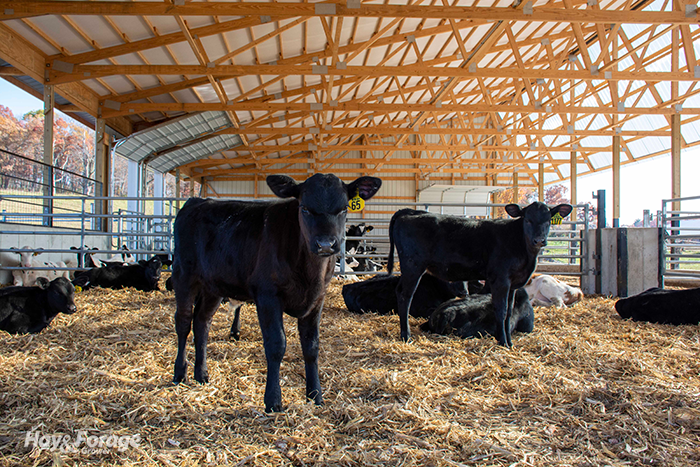
With the country’s beef cow herd at its lowest level since the 1960s, the number of calves also continues to shrink. This puts a tight clamp on the availability of stocker cattle.
Currently, CattleFax predicts that there will be 4 million to 5 million beef-on-dairy calves in the slaughter market during 2026, or 15% of the annual slaughter market. “These crossbreds typically outperform straight dairy calves in growth, feed efficiency, and carcass value,” notes Paul Beck, a beef cattle extension specialist with Oklahoma State University.
According to Beck, beef-on-dairy calves provide another potential resource for stocker and finishing systems, but a few key points relative to grazing these animals must be understood to get acceptable performance. He cites three recent research trials to make his points.
In one trial, steers were finished either as lightweight calves (100 days old) or after 217 days of stocker grazing. Grazed calves gained 2 pounds per day while grazing and entered the feedlot at heavier weights. They also had improved carcass traits but consumed more feed than calves placed directly on feed as calves.
In a commercial-scale study in western Oklahoma, beef-on-dairy calves were compared to native beef calves. The crossbred calves gained less during grazing than native beef calves on native range and entered the feedlot lighter, but they compensated during finishing to reach heavier slaughter weights.
In another wheat pasture study, 100-day-old lightweight beef-on-dairy crosses struggled early, gaining only 0.75 pounds per day in the first month compared to 2.5 pounds for beef calves. Gains improved with time — gaining 3.3 pounds per day from day 84 to 140. Over the 140-day grazing period, they added an average of 2 pounds per day compared to 2.75 pounds for the beef calves.
Grazing must be taught
“The slower start on pasture is often due to previous management and a new environment,” Beck states in Oklahoma State University’s Cow-Calf Corner newsletter. “Unlike beef calves raised alongside their dams, dairy-beef calves don’t learn grazing behavior early in life. When they leave the dairy, many are unfamiliar with hay, group housing, open pastures, or even water sources.”
When planning to graze beef-on-dairy stocker calves, Beck strongly recommends that they go through a two to three week receiving period. This allows time for calves to adjust to new feeds, learn to graze, and develop herd behavior before turnout. Once adapted, their grazing performance improves and becomes more competitive with beef calves.
“With tight beef calf supplies, beef-on-dairy crosses are becoming an important option for stocker operators,” Beck writes. “They require careful management at receiving and early grazing, but they finish well in the feedlot and produce high-quality carcasses.”
Given the growing availability of beef-on-dairy calves and the relative dearth of traditional beef animals, the former are likely to play a growing role in our nation’s beef supply as it moves forward.

